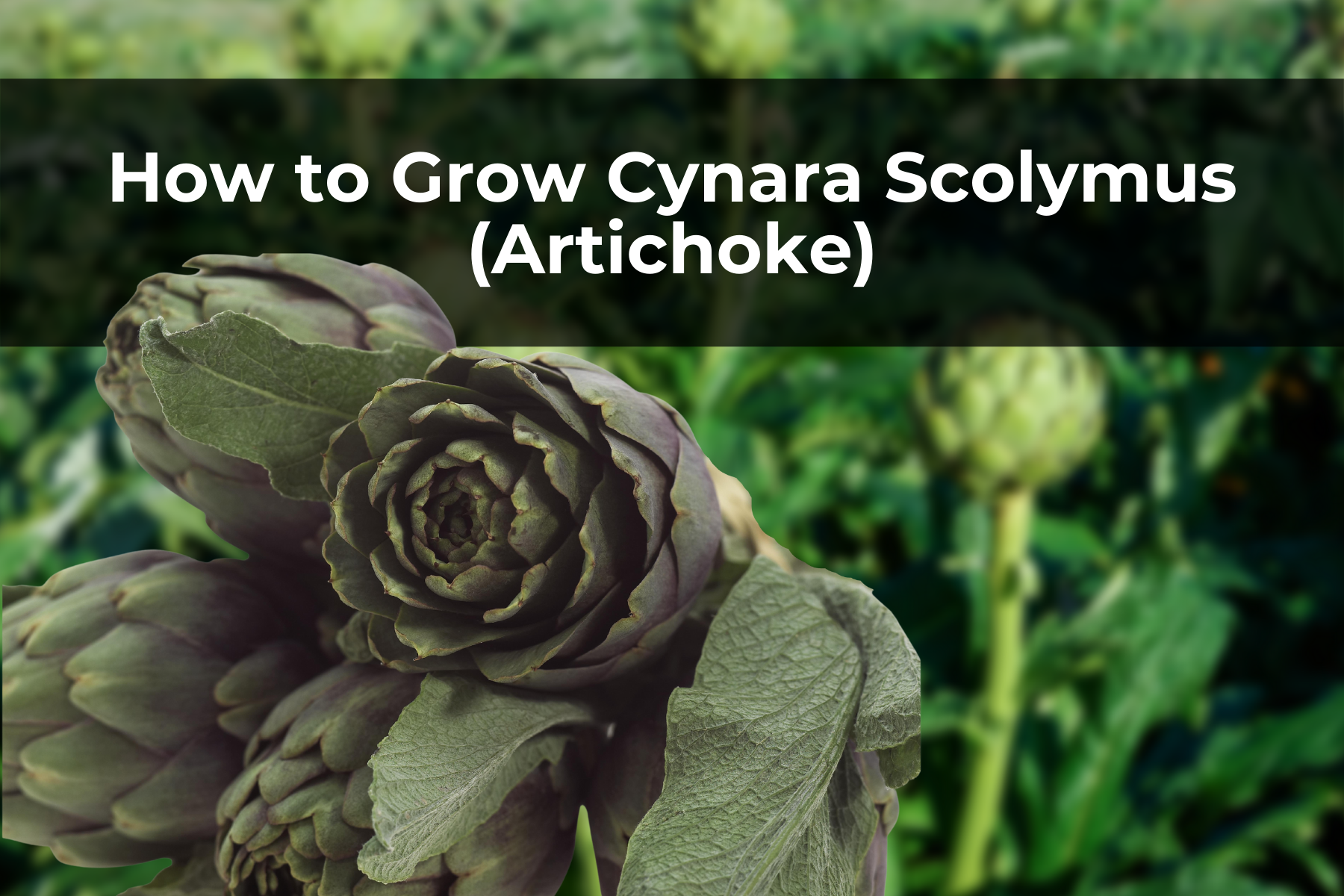Last Updated on June 12, 2023 by Real Men Sow
Cynara scolymus, also known as artichoke plants, are herbaceous perennials. They are part of the Asteraceae group, which includes dandelions and thistles. They can be grown in annuals in cooler climates, but they are perennials that are only short-lived in warmer regions.
Cynara Scolymus or Artichokes are often grown for their edible flower buds. These are harvested before the flowers open. The leaves of Artichokes are silvery-green with an arching shape. The leaves look soft but can be very prickly. The stems of the plant are thick and fleshy.
How To Sow And Grow Cynara Scolymus (Artichoke)
You can either start Cynara Scolymus (artichoke) seeds or transplant rooted shoots. While the most popular method of growing artichoke is to plant from rooted shoots, you can also try sowing seeds.
Sowing Cynara Scolymus (Artichoke) From Seed
It might surprise you to learn that sowing Cynara Scolymus (artichoke) seeds is easy. If your climate permits, you can start indoors at the end of winter (January to March) in a heated greenhouse, or under a cold frame. Plant the seeds in nursery pots, and transplant them when they have 2 leaves. In the next fall, transfer to the ground.
Planting Cynara Scolymus (Artichoke)
Cynara Scolymus (Artichoke) can be grown from roots taken from older plants. These are tiny runners that grow from the base. The harvest season and the climate will determine when root shoots can be planted. For areas with a harsh winter, it is better to plant in spring and fall.
- Harvest the next summer if you plant in spring (March or April).
- Plant in autumn (September-October) and harvest the next spring.
To give plants space, keep at least three feet (1 meter) between each plant. To keep them thriving, the sun must shine on them all day. Artichoke prefers soil that is well-drained, but not too moist. It should be rich in clay and have lots of humus. When planting, give your plants a good dose of fertilizer or soil. Shelter artichoke to protect against cold winds in winter
Cynara Scolymus (Artichoke) Care Guide
Cynara Scolymus (Artichoke) can live for many years in the same place, provided it is protected from freezing during frosty spells. Artichoke can be frozen to hardiness at 23°F (-5°C).
When winter arrives, ridge your artichoke plants’ base. To keep it from freezing, cover with leaf mulch. In spring, remove the ridge and weed the plant.
Watering
Cynara Scolymus (Artichoke) needs water and a lot of water. However, they don’t like too much soil and water stagnation, which can lead to roots rotting. Watering moderately, but regularly is the best solution. To prevent downy mildew and other diseases, avoid wetting the leaves while watering.
Overwintering
It is important to protect your Cynara Scolymus (artichoke) from winter’s harshness before the first frost spells. All artichoke head-bearing stalks should be removed from the base. Reduce the stems that are still tallest by cutting them in half.
The smaller stems should be left alone, those not exceeding 8 to 12 inches (20 or 30 cm). Around the foot of the artichoke, create a ridge of soil approximately 8-12 inches (20-30 cm) high. You can cover everything with a thick layer of straw or dead leaves. You can winterize plants with just a few plants.
After Winter
To reveal the leaves, remove the dried leaf covering at winter’s end. Protect the plant from the cold by removing the soil ridge at the start of spring. To keep the strongest stems, trim the branches at the base.
Cynara Scolymus (Artichoke) Pests and Diseases
The artichoke vegetable is easy to grow, but it is susceptible to many parasites like powdery mildew and downy mildew. To avoid downy mildew, we recommend spraying at the beginning of the growth stage with a Bordeaux mixture.
It is important to note that Cynara Scolymus (artichokes) can be a favorite shelter for snails and caterpillars. Setting traps for them could be smart as damage can be severe.
Harvest Cynara Scolymus (Artichoke)
When they are large enough, cut the heads with 6 inches (15 cm) of the stem. It is best to harvest them while they are still tender. A blue flower will appear if artichoke leaves are not harvested in time.
The head’s scales are a good indicator of when it is time to harvest. When the scales on an artichoke are broken, it is ready to be harvested. A single plant can produce 3-4 artichoke heads the first year, and 6-10 the next. It is best to replace the stock after 3 years because the harvest begins to dwindle.

